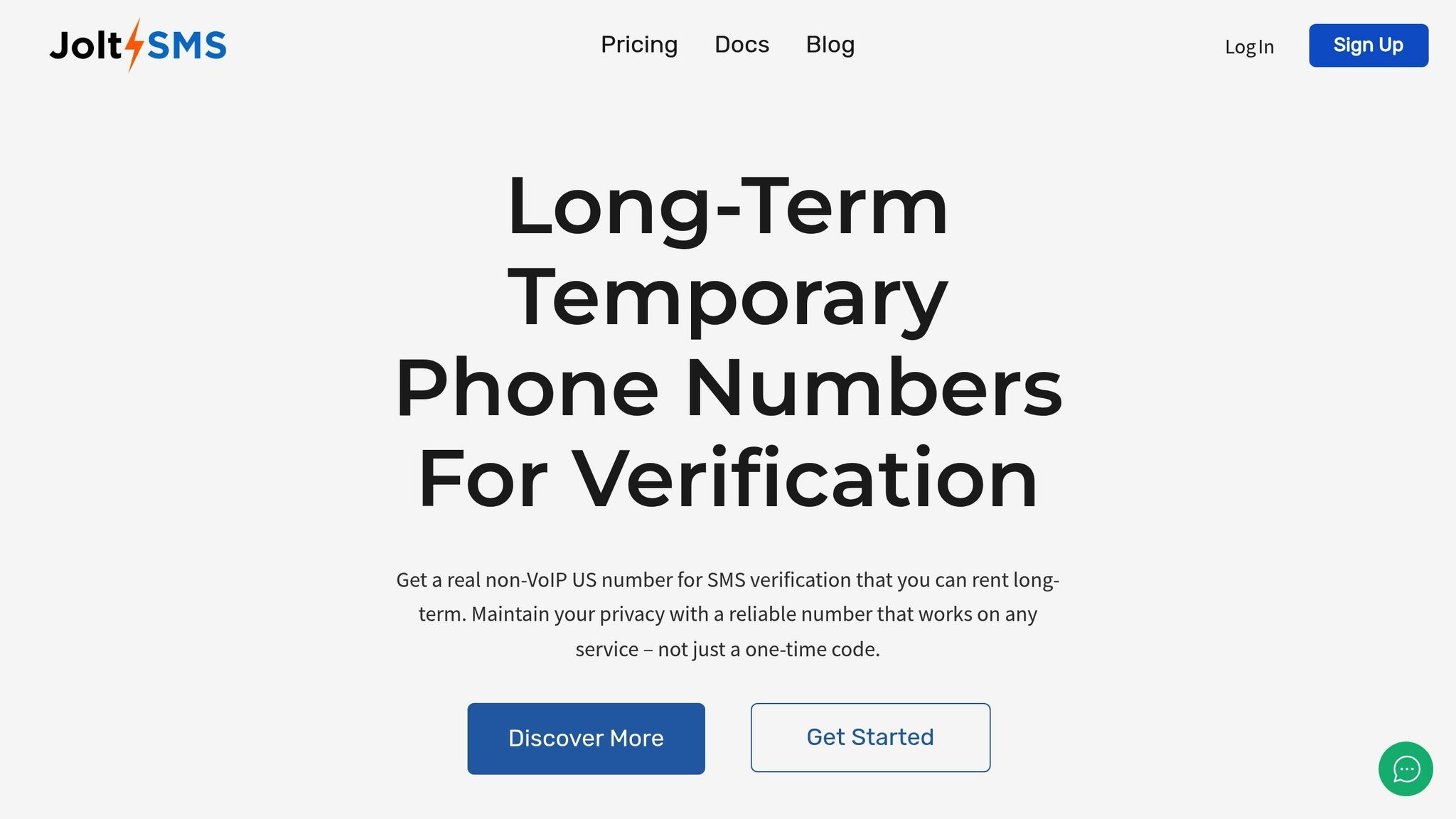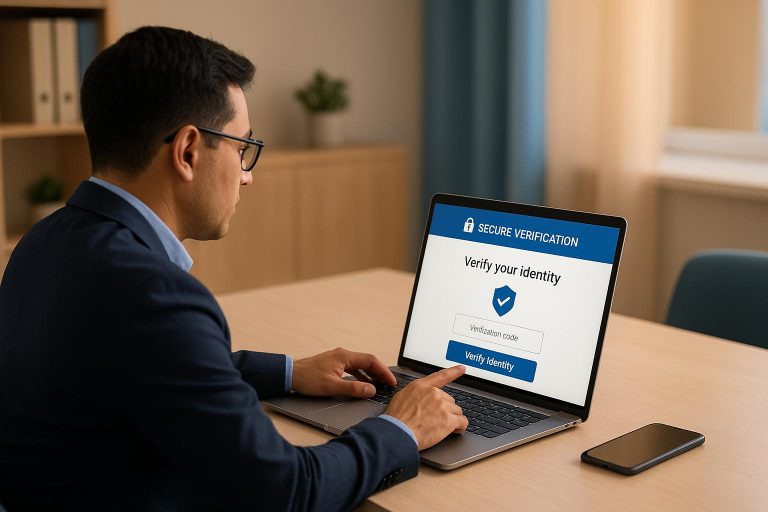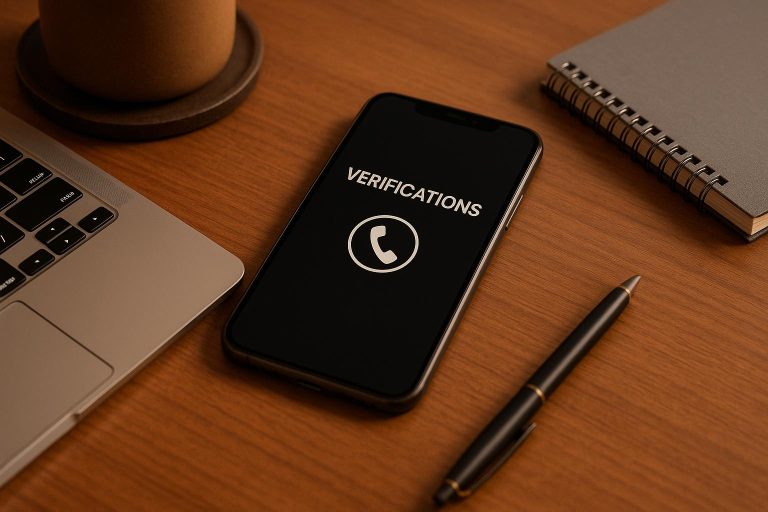Shared SMS Numbers for Teams: Benefits
Using shared SMS numbers can transform your team’s communication and customer service. Here’s why:
- Centralized Messaging: All messages are stored in a shared inbox, accessible to the entire team. This eliminates silos and ensures seamless collaboration.
- Improved Accountability: Message tracking, task assignment, and internal notes help teams stay organized and avoid missed responses.
- Faster Response Times: With real-time access, any team member can respond immediately, ensuring no delays even during absences.
- Consistent Customer Experience: Customers interact with one reliable number, improving trust and maintaining a unified brand voice.
- Cost Efficiency: Shared systems reduce the need for multiple lines, saving money while providing better functionality.
Switching to shared SMS numbers enhances team coordination, speeds up workflows, and ensures a smooth, reliable customer experience.
Shared texting Inbox | Shared text number | Shared SMS inbox
Centralized Messaging Improves Team Coordination
Switching to shared SMS numbers gives teams a unified communication hub that transforms collaboration. Instead of scattered individual messages, all conversations flow into a single, shared inbox. This setup allows every team member to view, respond to, and track messages in real time.
This centralized system breaks down communication silos that often arise when using personal numbers. For example, if a customer texts about a delivery issue or pricing question, the entire team has access to the conversation. This visibility eliminates redundant follow-ups and ensures seamless communication. Everyone stays on the same page, enhancing both accountability and efficiency.
Real-Time Access and Message History
Shared SMS platforms provide instant access to conversation histories for all team members. If one team member steps away, another can pick up the conversation without missing a beat.
This transparency also prevents duplicate responses. For instance, if a customer previously mentioned preferring morning deliveries, any team member handling the next interaction can see that detail and respond appropriately. It ensures consistent communication and a more personalized experience.
Modern shared SMS tools also include real-time notifications. When a high-priority client sends a time-sensitive request, the whole team gets alerted at once. This immediate visibility helps reduce response times and allows for quick task delegation, ensuring no important messages slip through the cracks.
Easy Task Assignment
Real-time access pairs perfectly with integrated task assignment to keep teams organized and accountable. Workflow tools within shared SMS platforms allow team members to tag colleagues, assign specific chats, and mark messages as "unread" or "unresponded." This ensures proper handoffs and continuous coverage.
For example, if a customer inquiry requires specialized knowledge, a team member can tag the appropriate colleague – like Sarah – who gets notified instantly. Sarah can review the full message history and take ownership of the issue, while the rest of the team sees that it’s being handled.
These tools are especially useful for teams working across shifts. A support agent finishing their day shift can tag their night-shift replacement, adding internal notes about next steps. This smooth handoff ensures customers experience uninterrupted service.
Status markers and filters further streamline task management, helping teams prioritize inquiries effectively. This system ensures nothing is overlooked, even during high-demand periods.
The result? A well-coordinated team where everyone knows their role, tasks are clearly assigned, and customers receive consistent, professional support no matter who they interact with.
Better Customer Service and Team Accountability
Using a shared SMS number creates a single, reliable communication channel for your customers. When messages come from one consistent phone number, it eliminates confusion and builds trust. Customers no longer have to guess who they’re speaking with or worry about reaching the right person – they know they’re interacting directly with your business through one familiar contact point. This approach also helps maintain a consistent brand voice across all interactions.
Consistent Brand Communication
A shared SMS number ensures that every customer interaction reflects the same tone and identity, no matter which team member is responding. This consistency strengthens trust and delivers a polished experience that enhances your brand’s image.
When teams rely on individual phone numbers, it often leads to mixed messaging and inconsistent customer experiences. A shared number avoids these pitfalls by enabling teams to follow clear communication guidelines, so every message aligns with your brand’s voice.
Customers also benefit from a more streamlined experience. They can reach out to one central number whenever they need assistance, reducing frustration and making the process more straightforward. Additionally, this system ensures continuity across shifts and staff changes. If a team member is unavailable, another can pick up the conversation seamlessly. Customers won’t notice any disruptions, and previous message histories remain accessible to the team, ensuring smooth transitions and uninterrupted service.
Better Message Tracking and Responsibility
Internally, a shared SMS number enhances team accountability and message management. Every message is logged in a central platform, making it easy to track conversations and avoid oversights. Teams can assign specific conversations to the right person while keeping the full interaction history visible to everyone, ensuring nothing falls through the cracks.
For example, if a customer asks a technical question, it can be routed to a specialist. Meanwhile, the sales team can still view the conversation to gain insights into the customer’s needs. This cross-team visibility fosters better collaboration and allows for more personalized service.
Features like internal notes and tagging systems further boost accountability. Team members can add private notes to conversations, helping track follow-ups, highlight customer preferences, or provide context for handoffs between shifts. If the morning team identifies an issue that requires attention later in the day, they can tag it for follow-up, ensuring no details are missed.
The centralized system also allows managers to monitor response quality and timing. This oversight helps ensure that service standards are met, provides opportunities for training, and recognizes outstanding performance. By tracking message statuses – such as unread, pending, or resolved – teams can stay organized and avoid duplicate responses. Urgent messages are easy to identify and prioritize, leading to quicker resolutions and higher customer satisfaction. Plus, integration with existing workflow tools further streamlines team processes and keeps everyone accountable.
Faster Response Times with Better Workflow Management
When it comes to customer communication, speed is everything. Customers don’t want to wait around while their messages linger in someone’s inbox. That’s where shared SMS numbers come in. They create a system where any available team member can step in and respond right away, cutting down on delays and keeping customers happy.
Here’s the problem with individual SMS numbers: messages can get stuck when the assigned person is unavailable – whether they’re in a meeting, on vacation, or just swamped. A shared system solves this by routing messages to a central inbox. This way, the first available team member can jump in and assist without missing a beat.
Quicker Responses with Shared Access
With shared SMS access, incoming messages are visible to the entire team in real time. For instance, if a customer sends a question at 2:00 PM, anyone – whether it’s the sales manager, a customer service rep, or a tech specialist – can see it and reply immediately. This real-time visibility means response times shrink from hours to just minutes.
Shared access also ensures your team can cover for one another during busy times or unexpected absences. Customers won’t have to wait, no matter who’s available. Every inquiry is tracked in a centralized system, so urgent messages don’t fall through the cracks – even if the primary contact person isn’t around.
Workflow Tools for Priority and Organization
Speed is great, but organization takes things to the next level. Modern shared SMS platforms come with workflow tools that help teams prioritize and manage responses efficiently. These tools don’t just make things faster – they make them smarter.
- Tagging systems let teams label messages as "urgent", "follow-up needed", or "technical issue." This visual system ensures high-priority messages stand out, so they’re handled first.
- Priority settings automatically flag time-sensitive issues like customer complaints or billing problems, while routine inquiries can wait for regular workflow. This keeps critical matters from getting buried.
- Message assignment features allow teams to delegate specific conversations to the right person. For example, a technical question can go straight to your IT specialist, while the sales team still has visibility to understand the customer’s overall needs. This kind of transparency encourages collaboration and improves service quality.
To avoid confusion, internal notes and status markers make it clear when someone is already handling a conversation. This prevents duplicate responses and ensures customers get consistent, coordinated answers instead of mixed signals from different team members.
sbb-itb-070b8f8
Individual vs. Shared SMS Numbers: Side-by-Side Comparison
Let’s break down the differences between individual and shared SMS numbers to see how they stack up.
With individual SMS numbers, each team member operates independently. Messages are sent directly to a personal phone, which can lead to information silos. This means critical customer conversations might stay hidden from the rest of the team. Plus, if a team member is unavailable and a customer sends an urgent message, that inquiry might go unanswered until the team member returns.
On the flip side, shared SMS numbers centralize messaging into a single inbox accessible to the whole team. Urgent messages don’t get stuck waiting for one person – any available team member can step in to respond. This setup not only speeds up response times but also creates a smoother experience for both the team and customers.
Comparison Table
Here’s a side-by-side look at how individual and shared SMS numbers compare:
| Feature | Individual SMS Numbers | Shared SMS Numbers |
|---|---|---|
| Message Visibility | Limited to one person | Accessible to the entire team in real time |
| Risk of Missed Messages | High when someone is unavailable | Low, thanks to team-wide access and handoffs |
| Response Time | Slower, reliant on one individual | Faster, with multiple team members ready to respond |
| Team Coordination | Disconnected | Centralized and collaborative |
| Customer Experience | Inconsistent and fragmented | Smooth and reliable |
| Accountability | Hard to track individual replies | Clear visibility into who’s handling what |
| Integration with Tools | Limited or nonexistent | Often integrates with platforms like Slack or Discord |
| Message History | Scattered across devices | Centralized and searchable |
| Duplicate Responses | More likely | Rare, due to shared visibility |
| Coverage During Absences | Gaps when team members are unavailable | Seamless, with team-wide backup |
The table highlights the clear advantages of shared SMS numbers, especially during busy periods or when staff members are out. With individual numbers, customers may face delays if they’re waiting for a specific person to reply. Shared numbers eliminate this issue by ensuring someone is always available to assist.
Shared SMS systems also come with cost benefits. Instead of paying for multiple individual lines, teams can use one centralized system. For instance, JoltSMS offers a dedicated U.S. number for $50 per month, including unlimited inbound messages and instant integration with tools like Slack or Discord.
Accountability is another major win with shared systems. Tracking responses across individual numbers can be tricky, but shared platforms provide a clear view of how messages are handled. This makes it easier for managers to identify areas for improvement, recognize top-performing team members, and ensure a high level of customer service.
JoltSMS: A Team-Friendly Solution for U.S. Businesses

When your team needs a reliable shared SMS solution, JoltSMS steps in with long-term, dedicated phone numbers that simplify communication and keep everything running smoothly.
By leveraging real SIM-based technology, JoltSMS provides authentic U.S. phone numbers that work seamlessly across 1,000+ platforms like Google, WhatsApp, and Coinbase. With 99.9% SMS delivery reliability powered by carrier-grade hardware, you can trust your team won’t miss out on critical messages.
Key Features That Make JoltSMS Stand Out
JoltSMS is built with teamwork in mind. It eliminates communication delays by instantly posting SMS verification codes to Slack or Discord using webhooks. This feature directly addresses common challenges like slow responses and missed messages.
The platform also offers a real-time dashboard that allows team members to view all incoming messages at once. Prefer automation? The same data is accessible via a REST API, making integration with your current business tools a breeze. This centralized setup means no more scrambling through individual devices to find important codes.
With unlimited inbound SMS under fair-use policies, your team can handle regular two-factor authentication and account maintenance without worrying about message caps or hidden fees. Plus, the numbers are exclusive to your business during the rental period – no sharing, no recycling – ensuring complete privacy for your communications.
Need help? JoltSMS provides 24/7 human support through a dedicated ticket desk at help.joltsms.com. They even back their service with a money-back guarantee if an SMS fails to deliver. This level of support is invaluable for teams that rely on SMS verification to keep operations running smoothly.
Straightforward Pricing That Works for Teams
JoltSMS keeps things simple with one flat plan at $50 per month. This includes a dedicated U.S. number with a 30-day minimum rental. The service auto-renews monthly, but you’re free to cancel anytime without penalties.
This pricing model eliminates the uncertainty of usage-based billing. Whether your team handles 10 verification codes or 1,000, the cost remains the same. For businesses juggling multiple accounts or services requiring SMS verification, this predictable pricing makes budgeting much easier.
The 30-day minimum rental ensures you get a stable, long-term number instead of a short-term fix. This is especially useful for teams managing ongoing projects or client accounts. Once your number is activated, it’s ready to use immediately across all supported platforms.
Compared to juggling multiple individual phone lines or dealing with unreliable verification methods, JoltSMS offers substantial cost savings. Instead of paying for separate business lines for each team member, your entire team can share a single dedicated number while maintaining full visibility and control over incoming messages.
Conclusion: How Shared SMS Numbers Improve Team Efficiency
Shared SMS numbers change the game for team communication by tackling the common headaches of using individual phone lines. Moving to a centralized system eliminates scattered conversations, missed messages, and overlapping responses – issues that can slow your team down and create unnecessary confusion.
The improvements are clear and immediate. With a shared SMS number, any team member can jump in to respond to messages without delay. Access to the full conversation history ensures smooth handoffs during shift changes or when someone is unavailable, so nothing gets overlooked.
This approach also elevates the customer experience. Instead of receiving mixed messages from different team members, customers interact with a consistent and unified voice. This not only reduces confusion but also builds trust and enhances satisfaction. It’s a simple way to create a stronger connection with your audience while keeping operations running smoothly.
For U.S. businesses, tools like JoltSMS offer a practical solution, helping teams stay organized, respond quickly, and manage costs effectively.
FAQs
How can a shared SMS number help teams stay organized and avoid missing important messages?
A shared SMS number simplifies team communication by consolidating all messages into a single, centralized location. This setup makes it easy to track and manage conversations, ensuring everyone stays informed and aligned. It also encourages accountability and clarity, as all team members have equal access to the same information.
By integrating with tools like Slack or Discord through webhooks, messages are delivered instantly, providing real-time alerts. Plus, it keeps a comprehensive record of all interactions, reducing the chances of missed messages and making teamwork smoother and more efficient.
What are the cost advantages of using a shared SMS number for your team instead of individual phone lines?
Using a shared SMS number is a smart way to save money compared to setting up separate phone lines for each team member. By using a single, team-accessible number, you can avoid the costs of maintaining multiple lines, cutting down on both hardware and service expenses.
It’s not just about saving money – it’s also about making things run smoother. A shared SMS system simplifies team workflows by centralizing communication. Team members can collaborate seamlessly without the hassle of managing multiple devices or accounts. The result? A more efficient, streamlined, and budget-friendly way to keep your team connected.
How can using a shared SMS number improve team communication and ensure consistent customer interactions?
A shared SMS number simplifies team communication by offering one central number for all customer interactions. This setup avoids the confusion of juggling multiple personal numbers and ensures everyone on the team can view the same message history.
By keeping all messages in one location, teams can respond more quickly and consistently, reducing the risk of missed messages or duplicate responses. This cohesive system helps present a polished, professional image and fosters trust with customers through clear and dependable communication.







